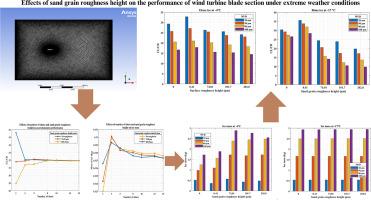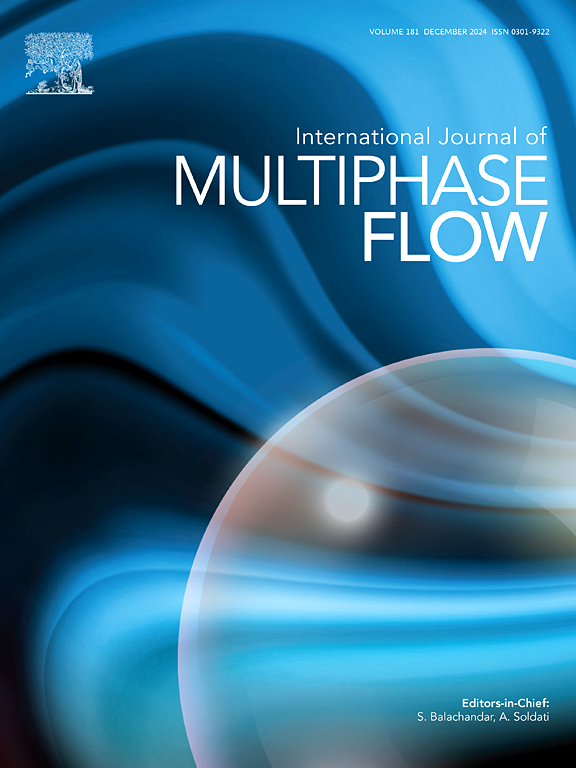极端天气条件下砂粒粗糙度高度对风力涡轮机叶片截面性能的影响
IF 3.8
2区 工程技术
Q1 MECHANICS
International Journal of Multiphase Flow
Pub Date : 2024-10-09
DOI:10.1016/j.ijmultiphaseflow.2024.105022
引用次数: 0
摘要
风力涡轮机叶片很容易结冰,结冰和侵蚀造成的粗糙度对其性能有很大影响。本文构建了数值模型来模拟沙粒粗糙度对积冰质量和空气动力性能的影响。通过应用 NASA 和 Shin 等人的模型考虑了沙粒粗糙度高度,研究的云特征为液态水含量(LWC)、中位数体积直径(MVD)和空气温度,分别覆盖冰冻细雨和云内结冰条件下产生的釉冰和融冰。数值模型采用了多镜头方法,并研究了镜头数量对冰增量和空气动力学性能的影响,以确定模拟中可使用的最佳镜头数量,从而在不影响精度的情况下最大限度地减少计算时间。研究了砂粒粗糙度高度与气动性能之间的关系,结果表明,最浅的粗糙度高度造成的性能下降较小。冰的质量随着 LWC 从 0.05g/m3 增加到 0.3g/m3,MVD 从 20 µm 增加到 100 µm 而增加,从而导致升阻比 (CL/CD) 下降。本文章由计算机程序翻译,如有差异,请以英文原文为准。

Effects of sand grain roughness height on the performance of wind turbine blade section under extreme weather conditions
Wind turbine blades are prone to icing and their performance is affected significantly by the roughness caused by icing and erosion. Numerical models are constructed to simulate the effects of sand grain roughness on the mass of accreted ice and aerodynamic performance. The sand grain roughness height is considered by applying the NASA and Shin et al. models, and the cloud characteristics studied are the liquid water content (LWC), median volume diameter (MVD) and air temperature covering freezing drizzle and in-cloud icing conditions resulting in glaze ice and rime ice, respectively. The numerical model applied the multi-shot approach, and the effects of the number of shots on the ice accretion and aerodynamic performance was examined to determine the optimum number of shots which can be used in the simulation in order to minimize the computational time without affecting the accuracy. The relationship between the sand grain roughness height and aerodynamic performance is studied, revealing that the shallowest roughness heights cause less performance degradation. The mass of ice increases with increasing LWC from 0.05g/m3 to 0.3g/m3 and MVD from 20 µm to 100 µm, which results in a reduction in the lift-to-drag ratio (CL/CD).
求助全文
通过发布文献求助,成功后即可免费获取论文全文。
去求助
来源期刊
CiteScore
7.30
自引率
10.50%
发文量
244
审稿时长
4 months
期刊介绍:
The International Journal of Multiphase Flow publishes analytical, numerical and experimental articles of lasting interest. The scope of the journal includes all aspects of mass, momentum and energy exchange phenomena among different phases such as occur in disperse flows, gas–liquid and liquid–liquid flows, flows in porous media, boiling, granular flows and others.
The journal publishes full papers, brief communications and conference announcements.

 求助内容:
求助内容: 应助结果提醒方式:
应助结果提醒方式:


